In any commercial kitchen in a hotel or a restaurant, fine dining outlet or otherwise, the BOQ (Bill of Quantities) will include locally fabricated equipment and imported equipment. This is a typical Indian attribute as there is no definitive distinction between the two. What it basically means is that while equipping a kitchen in a hotel or a restaurant in India, the choice is between equipment manufactured locally in India and importing what is not manufactured here.
Certain essential equipment like dishwashers/convection ovens and some of the specialised cooking equipment/ refrigerated equipment are not manufactured in India and need to be imported from different places of the world depending on the level of expertise.
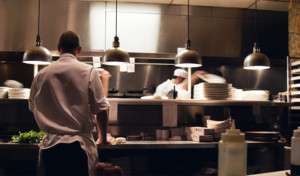 The list of such imported equipment is long, like combi-ovens made primarily in Germany, or coffee machines mostly made in Italy. Companies in the business of manufacturing these equipment – like Convotherm (combi ovens) and CMA (coffee machines) – have economies of scale and the technology to not just produce but also to bring technological innovations and improve on them.
The list of such imported equipment is long, like combi-ovens made primarily in Germany, or coffee machines mostly made in Italy. Companies in the business of manufacturing these equipment – like Convotherm (combi ovens) and CMA (coffee machines) – have economies of scale and the technology to not just produce but also to bring technological innovations and improve on them.
A big reason that most advanced kitchen equipment are not made here is that the technology needed to manufacture them is not available locally and neither is the scope for reaping economies of scale.
“Indian companies have been improving on equipment fabrication but still there is a long way to go. Specialised equipment like dish washers, ice cubers, bulk cookers, combi oven etc. are still not getting manufactured locally with even the minimum standards. Refrigeration is also an issue with local manufacturing,” says Kitchen Consultant Amit Sen Vaidya.
But first it is important to understand what equipment fabrication is all about. It is about tailoring to individual requirements in terms of the equipment specifications – like what kind and grade of stainless steel to use, what should be thickness of the steel, etc.
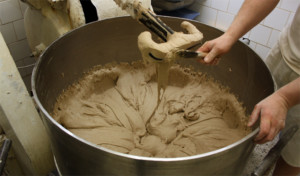 Indian manufacturers, while they have upgraded the factories with modern machinery and a skilled workforce, still lag behind in terms of ergonomic design and standardisation. They are generally used to working with specifications given to them, and very few have ventured and taken a step towards developing new products and marketing them.
Indian manufacturers, while they have upgraded the factories with modern machinery and a skilled workforce, still lag behind in terms of ergonomic design and standardisation. They are generally used to working with specifications given to them, and very few have ventured and taken a step towards developing new products and marketing them.
According to Kitchen Consultant Ram Vittal Rao, “Custom fabrication has reached upto 40 per cent vis-a-vis international levels but Indian manufacturers have not brought out equipment like refrigerators, ice cubers, Chinese ranges, dish washing machines, food processing equipment, baking and confectionery equipment.”
However, developments in the last three to four years show that local manufacturers are investing in automating the production process to a higher level. Interestingly, in Bengaluru, there is a company making system engineered exhaust hoods and ventilated ceilings to international standards.
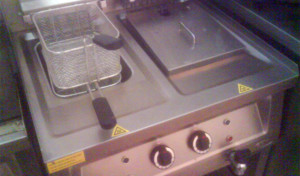 Similarly, in Pune, a manufacturer is making drawer type dual temperature refrigerators and freezers. Indian manufacturers seem to wake up to the realisation that they need to upgrade and automate their production facilities. To do this they can either tie up for technology transfer or, even better, get into a JV with a foreign manufacturer who can collaborate with them.
Similarly, in Pune, a manufacturer is making drawer type dual temperature refrigerators and freezers. Indian manufacturers seem to wake up to the realisation that they need to upgrade and automate their production facilities. To do this they can either tie up for technology transfer or, even better, get into a JV with a foreign manufacturer who can collaborate with them.
Doing so will not only improve efficiency all across but also significantly reduce the cost as import duty component is still high. Take the case of prominent refrigeration equipment from the United Kingdom manufacturer Adande. It has a JV with Accurate, a company based out of Pune, which holds a majority stake in the principal company. The Indian enterprise has been aptly named Adande Refrigeration India Pvt Ltd. Another example is of Vianen (exhaust hoods makers) from Holland, which has tied up with an Indian company SSS to produce the equipment in India.
Such collaborations have certainly stirred up the Indian market. The Government also needs to do its bit in terms of rationalising the duty structure and helping in the growth of the industry.
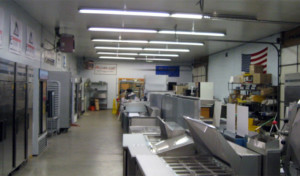 Says Rao: “We want international companies to set up shop in India but they have to be provided support by cutting down on redtape. The need of the hour is removal of EPCG licences, going easy on taxation so that local manufacturers are encouraged to produce better equipment.”
Says Rao: “We want international companies to set up shop in India but they have to be provided support by cutting down on redtape. The need of the hour is removal of EPCG licences, going easy on taxation so that local manufacturers are encouraged to produce better equipment.”
At the same time, it is also important to note that standardisation of equipment in terms of specifications and sizes, a standard feature abroad and something which kitchen consultants here should help bring about, would go a long way in improving product delivery.
How to meet local specifications and sizes is an issue during project discussions on imported equipment. Consultants can play a key role in sorting out the differences that arise on whether to import fabricated equipment like sinks, work tables, shelves etc, given the seeming unwillingness of equipment majors to tailor to local needs and specifications. These products form a huge portion of the total BOQ of any kitchen and present a big market opportunity. This is particularly relevant to hotels with kitchens that have 4 star rating and above as they would be the target market.
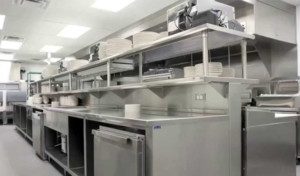 Being part of the organised sector, they would be using the services of professional kitchen consultants to get an effective, effi cient and productive kitchen in terms of both design and equipping the same.
Being part of the organised sector, they would be using the services of professional kitchen consultants to get an effective, effi cient and productive kitchen in terms of both design and equipping the same.
The debate on whether to manufacture in India or go for imports is not at all meant to be a reflection on the capabilities of Indian manufacturers. The issue concerns more about the adoption of processes and the level of automation required by them to produce equipment at par with anybody else in the world. It is accepted that the quality of fabrication from abroad is superior in all respects.
But an important consideration in deciding the issue of imported versus Indian is the final cost of equipment.
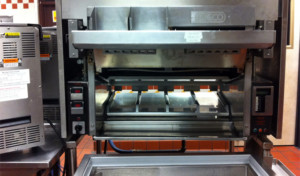 Should it be on the basis of cost-benefit analysis of the final product that is being delivered rather than on purely the considerations of price? Surely, the cost of imported equipment would be higher compared to local manufacturing. However, to bring a better perspective to the issue, the comparison should also be relative and not just an objective one.
Should it be on the basis of cost-benefit analysis of the final product that is being delivered rather than on purely the considerations of price? Surely, the cost of imported equipment would be higher compared to local manufacturing. However, to bring a better perspective to the issue, the comparison should also be relative and not just an objective one.
The report says that full-service restaurants will remain the largest end-users, with total demand expected to reach US$ 19.1 bn in 2016
Must Read



